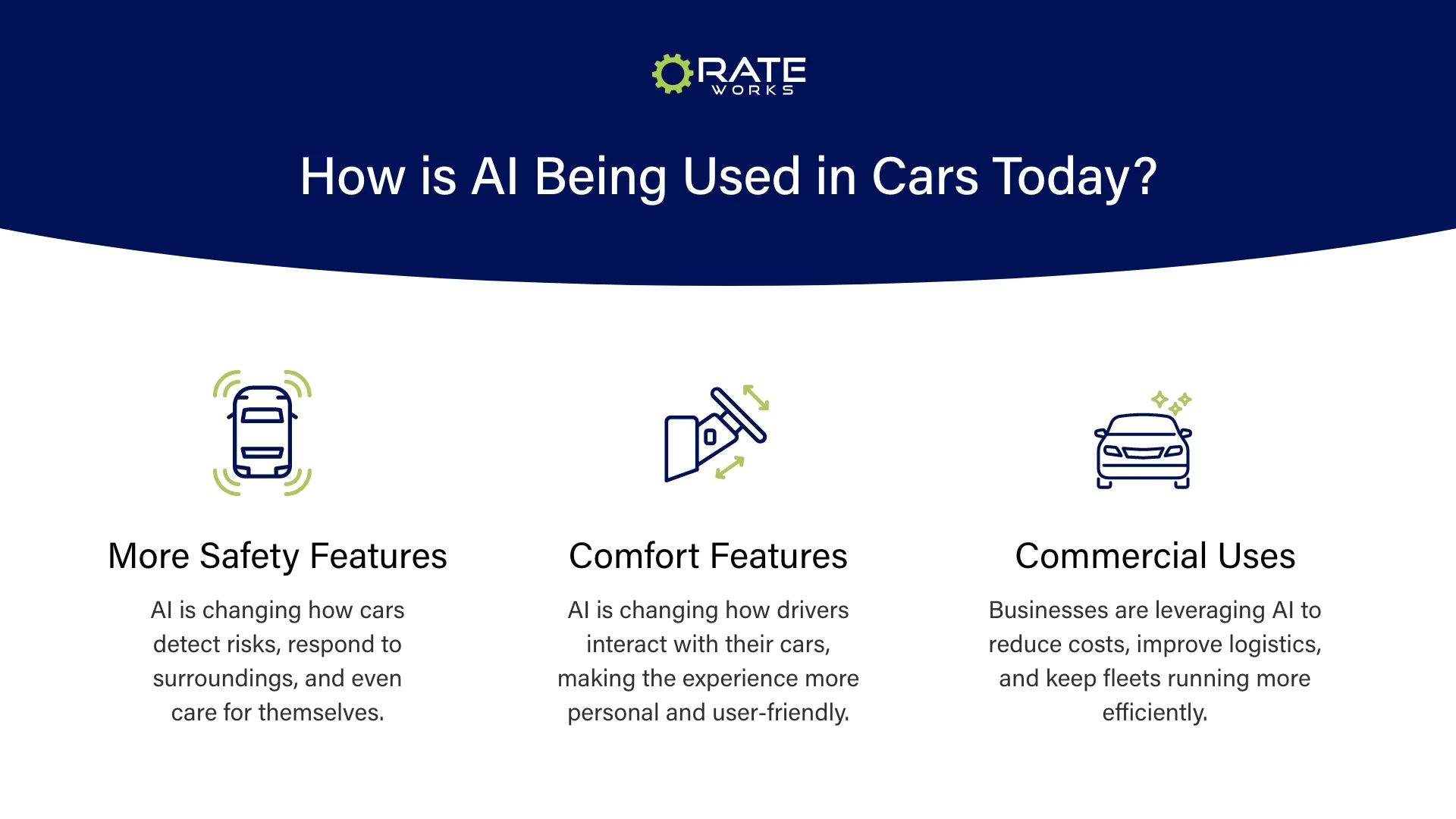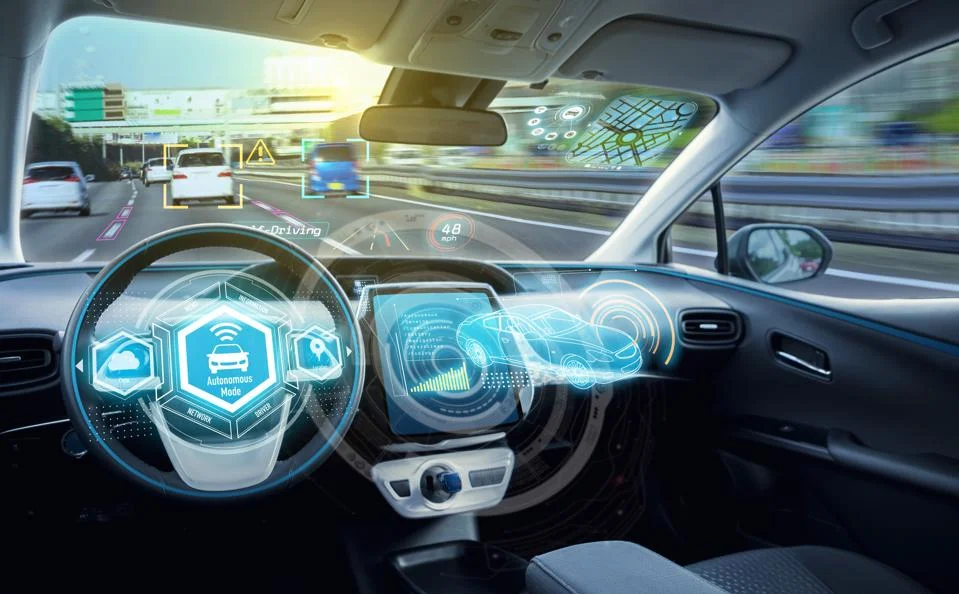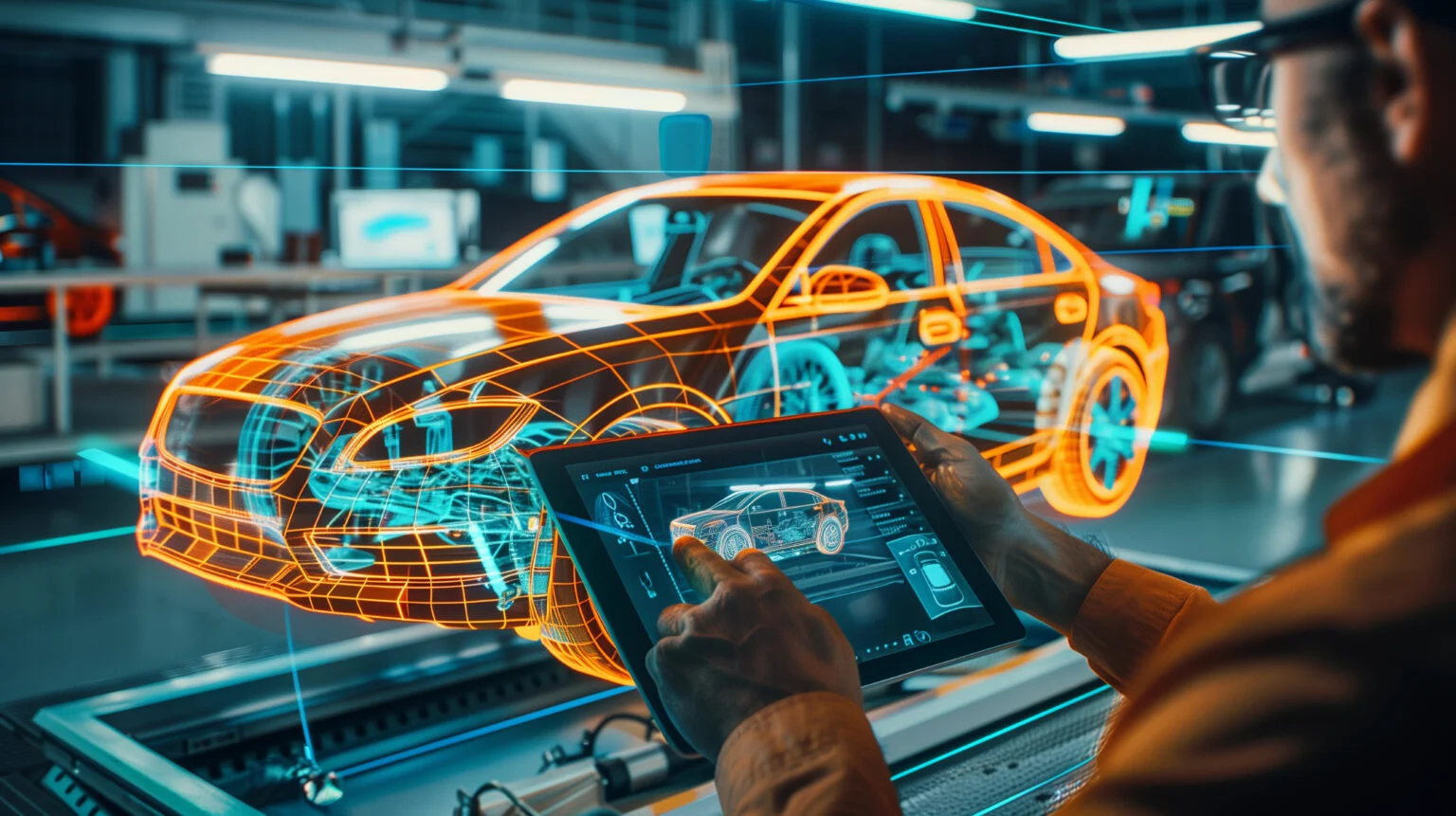Artificial intelligence, or AI, involves computer systems that can analyze data, make decisions, and perform tasks traditionally handled by people. While it's gaining attention in industries like healthcare and finance, the auto industry is also seeing major changes driven by this technology.
Cars are no longer just machines with engines. Many are now equipped with technology that learns, responds, and adapts. From driver assistance to predictive maintenance, AI is helping vehicles do more than ever before. In this blog, we’ll examine how AI in cars is becoming increasingly prevalent today and its implications for drivers.

AI in Cars Means More Safety Features
When you get in a car, whether as the driver or a passenger, you want to know that you’ll be as safe as possible. And while much of that safety depends on the skills of the person behind the wheel and others on the road, AI is helping to provide extra layers of protection. It's changing how cars detect risks, respond to surroundings, and even care for themselves.
One major area where AI is making a difference is in Advanced Driver Assistance Systems (ADAS). These systems support the driver by recognizing road signs, detecting obstacles, monitoring blind spots, and helping with lane-keeping. AI powers features like automatic emergency braking, adaptive cruise control, and parking assistance, allowing cars to react to situations in ways that improve safety on the road.
Another development is Autonomous Driving. While fully self-driving cars are still being tested, many vehicles already offer partial automation. AI systems can manage highway driving, handle stop-and-go traffic, and even perform lane changes. These features are becoming more common, especially in higher-end models, and they continue to improve as the technology advances.
AI is also helping vehicles stay in better shape through predictive maintenance. Instead of waiting for a dashboard warning, AI systems analyze data from sensors to detect signs of wear before they turn into larger issues. This proactive approach to car maintenance helps drivers avoid unexpected breakdowns and manage repair costs more effectively. It also gives automakers and service providers better insight into recurring problems across different models, allowing for more accurate service schedules and tailored maintenance plans.
From alerting drivers to danger to managing the car's own health, AI is quietly helping cars become safer, more responsive machines on the road.
Comfort Features
While safety is the priority, that isn’t to say that artificial intelligence in vehicles doesn’t come with additional benefits. AI is also changing how drivers interact with their cars, making the experience more personal and user-friendly.
One way this is happening is through personalization. AI can learn a driver’s habits and preferences over time, from seat positions and mirror angles to climate control settings and favorite driving routes. Some vehicles now adjust these features automatically when the driver enters, creating a more familiar and comfortable environment from the moment the engine starts.
Voice assistants have also improved significantly thanks to natural language processing (NLP). Instead of memorizing a list of commands, drivers can now speak naturally. You might say, “I’m cold,” and the car will raise the temperature, or ask for directions in everyday language. These systems reduce the need to fumble with buttons or screens, helping drivers keep their focus on the road.
Commercial Uses of AI in Cars
In 2024, 68.6% of cars sold globally featured some level of automation (SAE Level 1 and above), and that number is expected to climb to 90.4% by 2030. While much of the focus is on personal vehicles, the commercial sector is just as invested in AI-driven improvements—if not more. Businesses are leveraging AI to reduce costs, improve logistics, and keep fleets running more efficiently.
One of the most visible developments is in navigation and traffic prediction. Apps like Google Maps and Waze use AI to process live traffic data and crowd-sourced reports to recommend faster routes, avoid bottlenecks, and adjust directions in response to road conditions. These tools help save time and reduce fuel use, making them especially valuable for delivery and service-based businesses.
AI is also being used to manage fleets at a higher level. From tracking vehicles to predicting repairs, commercial applications of AI help reduce downtime and support better decision-making.
Here are a few examples of how AI is used commercially:
- Route optimization to reduce delivery times and fuel usage
- Predictive maintenance to schedule service before breakdowns occur
- Driver behavior monitoring to support safety and reduce insurance costs
- Real-time tracking for customer service and logistics planning

Looking Ahead: Smarter Cars, Smarter Choices
Artificial intelligence is changing how we drive, maintain, and experience our vehicles. From safety features like driver assistance and predictive maintenance to comfort tools like voice assistants and personalized settings, AI is reshaping both personal and commercial transportation. Navigation apps, traffic prediction, and fleet management systems are already using AI to improve efficiency on a daily basis. As automation continues to grow, AI will likely play an even larger role in how we interact with our cars.
If you’re exploring ways to lower your overall transportation costs, RateWorks offers auto refinancing that may help reduce your monthly payments or interest rate. Whether your car uses advanced tech or not, smarter financing can help you get more out of your current vehicle. Request a quote today.


.webp)









